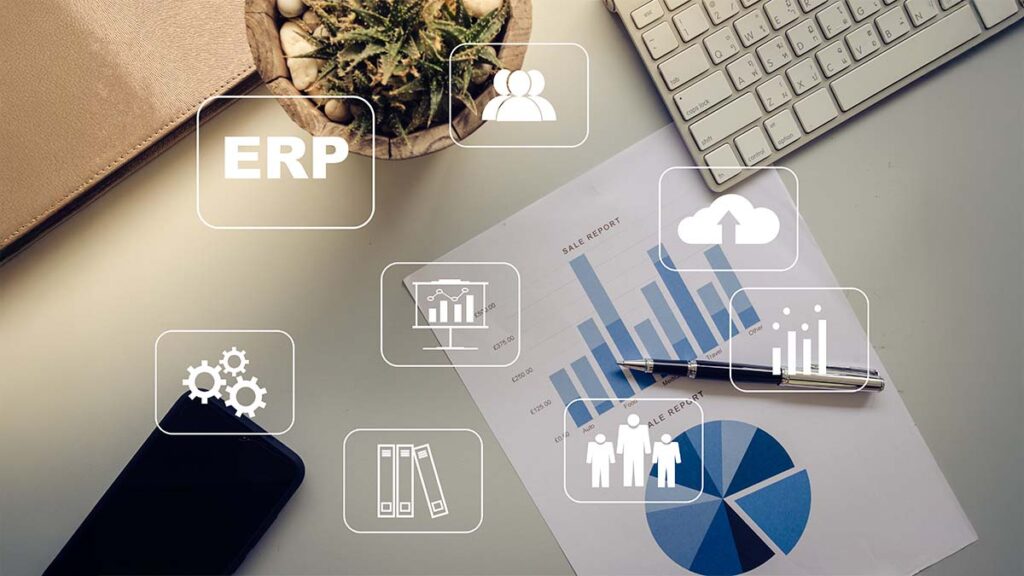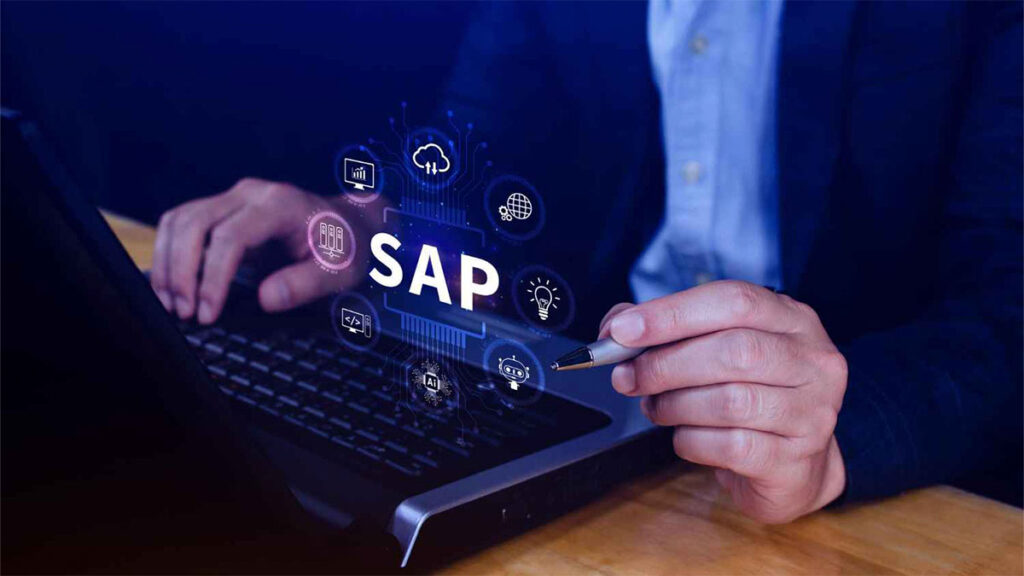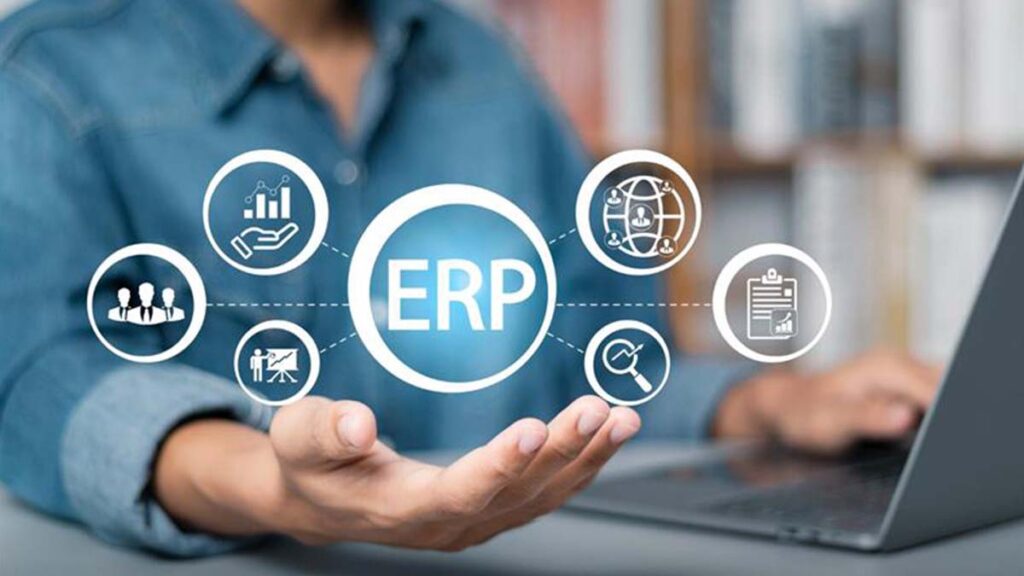In today’s digital world, businesses depend on Enterprise Resource Planning (ERP) systems to improve operations, boost productivity, and ensure smooth communication across departments. However, with this convenience comes the responsibility of ensuring strong ERP solution security
Understanding ERP Solutions Security
ERP Solutions Security refers to the measures, practices, and technologies implemented to protect ERP systems from unauthorized access, data breaches and cyber threats. As these systems store sensitive business information, from financial data to customer records, securing them is paramount

Why ERP Solutions Security Is Critical for Your Business?
Neglecting ERP Solutions Security can lead to severe consequences, including data breaches, financial losses, reputational damage, and compliance violations. Here are some reasons why your business cannot afford to ignore ERP Solutions Security:
Protects Sensitive Data: ERP systems hold critical data, including employee information, financial records, customer data, and supply chain details. A lack of security exposes this data to unauthorised access.
Ensures Compliance: Businesses must comply with industry-specific regulations like GDPR, HIPAA, and PCI-DSS. A robust ERP Solutions Security strategy ensures compliance with these standards.
Prevents Unauthorised Access: Without proper security measures, hackers can exploit vulnerabilities in your ERP system to gain unauthorised access to critical data.
Safeguards Business Continuity: A secure ERP system reduces the risk of disruptions caused by cyber-attacks or system failures.
Protects Brand Reputation: A data breach can harm your brand’s image and weaken customer trust, making recovery difficult.
Key Components of ERP Solutions Security
For complete protection, an ERP solution should have these key security features.
User Authentication and Access Control
- Implement strong user authentication mechanisms.
- Use role-based access control (RBAC) to limit user access to necessary functions.
- Regularly review user permissions and revoke access when employees leave.
- Apply the principle of least privilege (Polp) to minimise exposure.
Data Encryption
- Encrypt data at rest and in transit to prevent unauthorised access.
- Use advanced encryption standards (AES) for maximum security.
- Regularly update encryption protocols to align with industry standards.
- Consider end-to-end encryption for sensitive data.
Regular Security Audits
- Regularly perform security audits to spot vulnerabilities.
- Regularly update and patch your ERP software.
- Perform vulnerability scanning and penetration testing.
- Document audit results and implement corrective actions.
Multi-Factor Authentication (MFA)
- Enable MFA so all users can add an extra layer of security.
- Use biometric authentication for critical functions.
- Regularly review MFA settings to ensure they are up-to-date.
Continuous Monitoring
- Monitor ERP system activity for any suspicious behaviour.
- Use real-time threat detection and response tools.
- Implement Security Information and Event Management (SIEM) for centralised monitoring.
- Set up automated alerts to notify you of critical security events.
Common Threats to ERP Solutions Security
Despite having a robust security framework, ERP systems remain vulnerable to various threats, including:
- Phishing Attacks: Malicious actors use deceptive emails to steal login credentials.
- Insider Threats: Unauthorised actions by employees or contractors with access to the ERP system.
- Malware Attacks: Malware can infiltrate ERP systems, leading to data theft or corruption.
- SQL Injection Attacks: Hackers manipulate input fields to access sensitive data.
- Zero-Day Exploits: Attackers exploit unknown vulnerabilities before patches are released.
- Ransomware Attacks: Cybercriminals encrypt ERP data and demand a ransom for decryption.
Best Practices for Strengthening ERP Solutions Security
Implementing best practices can significantly enhance your ERP Solutions Security:
- Regularly update your ERP software and apply security patches.
- Conduct employee training on cybersecurity awareness.
- Enforce strong password policies for all users.
- Use data backup and disaster recovery solutions.
- Partner with a trusted ERP security provider.
- Conduct regular phishing simulations to train employees.
- Implement a zero-trust security model for critical systems.
How Integrated Security Solutions Enhance ERP Solutions Security?
Integrating advanced security solutions like AI-powered threat detection, SIEM (Security Information and Event Management), and identity management systems can make ERP solutions much more secure.
These solutions offer instant updates, automatically detect security threats, and help meet compliance rules.
Additionally, businesses can leverage cloud-based ERP security solutions to benefit from scalable and continuously updated protection. For example, cloud-based identity management allows for centralised user control, enhancing security
Conclusion
ERP solution security is essential for businesses of all sizes. By implementing strong security measures, conducting regular audits and staying aware of emerging threats, your business can protect its critical data and ensure smooth operations.
Keep in mind, a secure ERP system is the backbone of a safe business. Make ERP security a priority today to protect your future
Why Choose Tek Leaders for ERP Services?
Tek Leaders delivers robust ERP solutions that empower organizations to streamline operations, improve data visibility, and drive smarter decision-making across all business functions. From finance and supply chain to inventory, procurement, and compliance, our ERP services are tailored to fit your specific workflows and industry demands. We specialize in seamless system integration, real-time analytics, and automation that reduces manual work and boosts efficiency. Whether you’re modernizing legacy systems or scaling your operations, Tek Leaders provides end-to-end ERP support to help you operate more intelligently, efficiently, and competitively in a fast-changing digital landscape.




